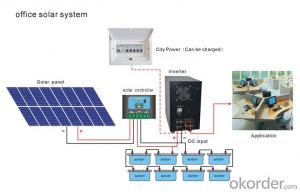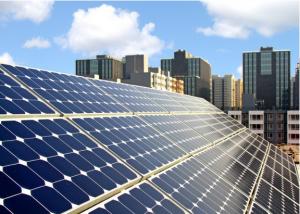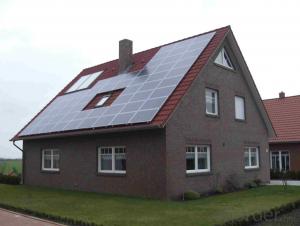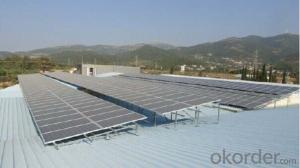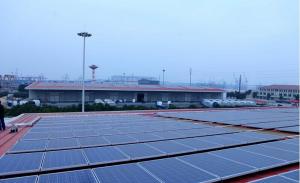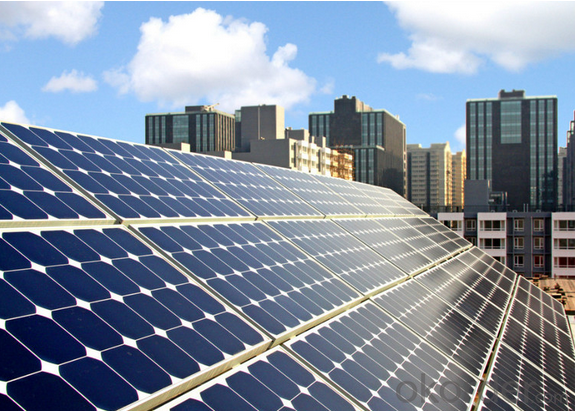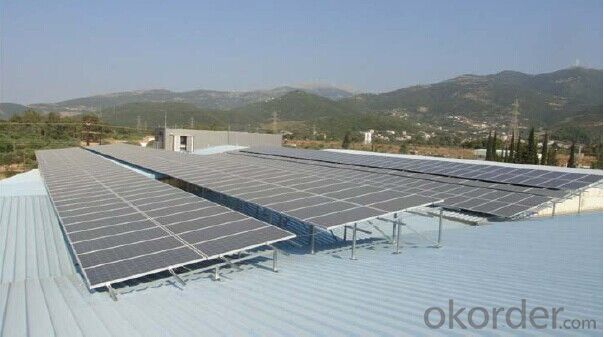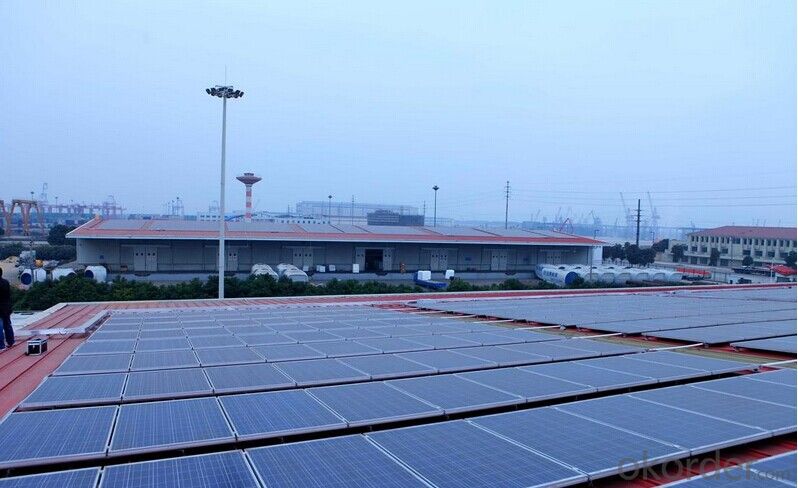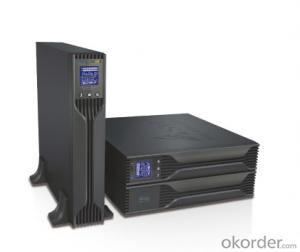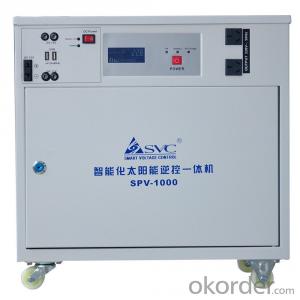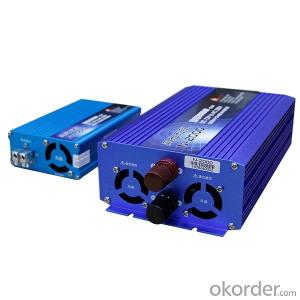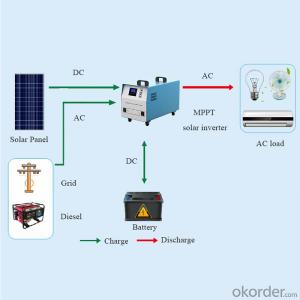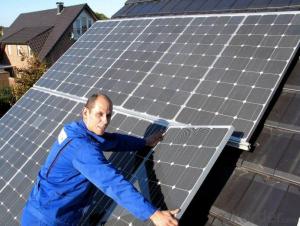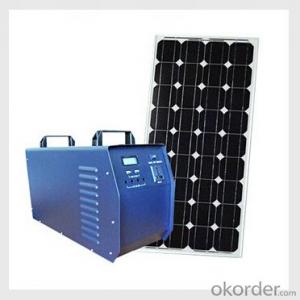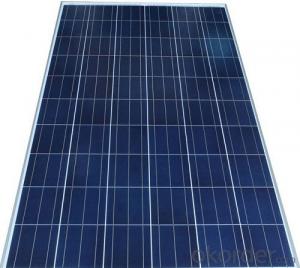Complete Solar System for Home Solar Panel System Home 5KW
- Loading Port:
- Guangzhou
- Payment Terms:
- TT or LC
- Min Order Qty:
- 10 set
- Supply Capability:
- 100000 set/month
OKorder Service Pledge
OKorder Financial Service
You Might Also Like
Complete Solar System for Home Solar Panel System Home 5kw
Features of Complete Solar System
Solar module:solar battery module(also called photovoltaic battery module)in series or in parallel according to the system requirements,the solar energy will change into electrical energy in the light of the sun and then output,it is the core component of solar photovoltaic system.
Controller: solar power controller is an important part of the solar power system, System of charging and discharging and load work automatically by its intelligent control and protection. Its performance directly affects the reliability of the system. Especially the battery life, overcharge or over discharge will be cause damage and even lethal damage for the battery.
Inverter: in solar photovoltaic power supply system, if it has the AC load, it is necessary to use the devices of the inverter. The direct current generated by solar modules or the battery release of DC into AC for load.
Battery:Stored up the electricity produced by the solar cell module produce,When illumination is insufficient or night or load demand is greater than the power produced by the solar cell module.Stored energy will be released in order to meet the load demand of energy,It is the solar energy photovoltaic system energy storage unit.Currently solar pv system commonly used is lead acid battery,For higher requirements of the system,Usually adopt deep discharge vrla battery ,deep discharge suction fluid type lead-acid battery,etc
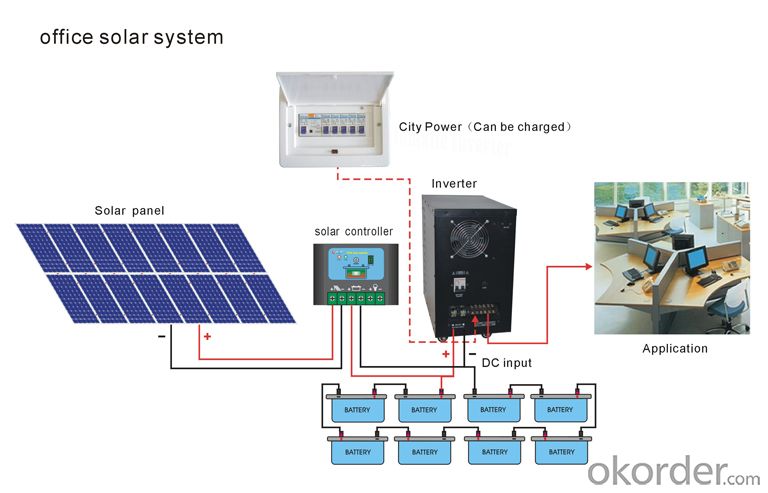
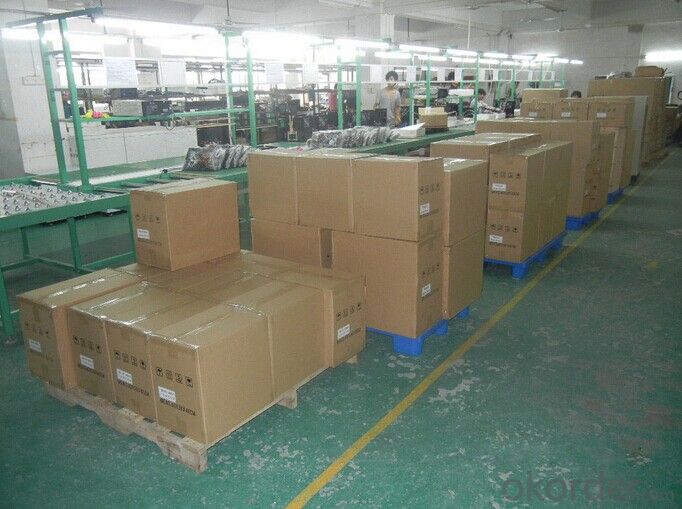
Product Parameter
Model XD- | TNY50112-10 | TNY70112-50 | TNY10224-50 | TNY20248-40 | TNY50296-50 | |||
Solar Energy Module | Type | Monocrystalline silicon A level | ||||||
Power | 100W | 500W | 1100W | 1800W | 4400W | |||
Daily Power generation | 0.5KWH | 2.5KWH | 5.5KWH | 9KWH | 22KWH | |||
Size(mm) | 1160×660×35×1 | 1250*660*35*4 | 1360*900*40*6 | 1620*990*40*8 | 1955*990*45*16 | |||
PV Controller | Control mode | Direct charge/PWM/MPPT | ||||||
Charge current | 10A | 50A | 50A | 40A | 50A | |||
Rated charging voltage | 12VDC | 12VDC | 24VDC | 48VDC | 96VDC | |||
Compulsive charging voltage | 14.8V | 29.6V | 59.2V | 118.4V | ||||
Balanced charging voltage | 14.4V | 28.8V | 57.6V | 115.2V | ||||
Floating charging voltage | 13.8V | 27.6V | 55.2V | 110.4V | ||||
Recovery charging voltage | 13.3 | 26.6V | 53.2V | 106.4V | ||||
Battery overvoltage protection/recovery | 16.5V/15V | 33V/30V | 66V/60V | 132V/120V | ||||
Protection function | Reverse connection, short circuit, overcharge, anti charge protection | |||||||
Display | LED | |||||||
PV Inverter | Rated Capacity | 500W | 700W | 1000W | 2000W | 5000W | ||
DC voltage | 12V | 24V | 48V | 96V | ||||
Undervoltage protection | 10.5V | 21V | 42V | 84V | ||||
Inverter structure | Low frequency structure | |||||||
Mains input | 75VAC-125VAC or 145VAC-275VAC | |||||||
Inverter output | 110VAC+/-2% or 220VAC+/-2% | |||||||
Mains input charging current | 10A | |||||||
Working way | Mains priority/solar power priority (optional) | |||||||
Conversion time | ≤4ms | |||||||
Overload capacity | Overload 110% 30 seconds the machine automatically shut down; overload shutdown 120% 2 seconds; mains mode overload do not shutdown | |||||||
Conversion efficiency | ≥80% | |||||||
Output waveform | Pure sine wave | |||||||
Work environment | Temperature0-40℃,Humidity10-90% | |||||||
Cooling mode | Forced air cooling | |||||||
Protection function | Mains over / under-voltage, direct current is too high / undervoltage, the inverter output short circuit | |||||||
Display | LCD | |||||||
Output waveform distortion | ≤±0.3% | |||||||
Input and output frequency | The same with power system | |||||||
Battery | Battery Type | Deep cycle maintenance-free lead-acid battery | ||||||
Battery capacity | 100AH/12V×1 | 200AH/12V×1 | 100AH/12V×2 | 200AH/12V×4 | 100AH/12V×8 | |||
Discharge time(full Load calculation) | 1.3H | 1.8H | 1.3H | 2.8H | 1.1H | |||
Machine specifications | Size(mm) | 465×245×465 | 580×280×470 | 580×300×610 | 600×540×940 | |||
Weight | 48KG | 81KG | 7KG | 302KG | 332KG | |||
Remarks | Specification for reference.Subject to change without prior notice | |||||||
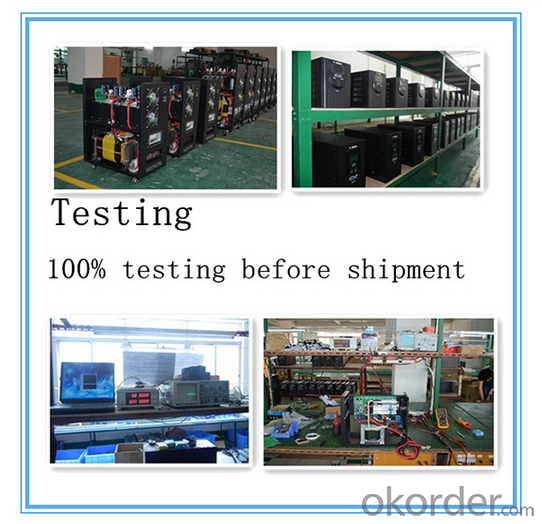
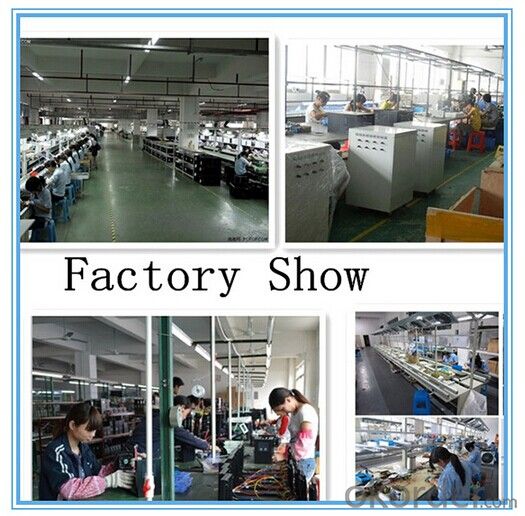
- Q: How does the efficiency of solar panels vary based on the temperature?
- Solar panels' efficiency is subject to variation depending on temperature. In general, solar panels perform better in cooler temperatures, but their efficiency declines as the temperature rises. This phenomenon is attributed to the materials used in solar panels, particularly semiconductor materials like silicon. As the temperature increases, the electrons in the semiconductor material gain more energy, resulting in a rise in the voltage output of the solar panel. However, this increase in voltage does not proportionally enhance the power output, leading to an overall decrease in efficiency. Furthermore, elevated temperatures can amplify the resistance of the electrical conductors within the solar panel, causing power losses and reduced efficiency. This is known as thermal losses. The heightened resistance impedes the flow of electric current, thereby diminishing the overall power output. In addition, high temperatures can trigger the "thermal runaway effect," a phenomenon where the efficiency of the solar panel rapidly declines as the temperature increases. This can pose significant challenges, particularly in regions with hot climates or during heatwaves. To counteract the adverse impact of temperature on solar panel efficiency, advanced solar panel designs incorporate cooling mechanisms. For instance, some panels are equipped with built-in ventilation systems or are elevated to facilitate air circulation underneath, ensuring dissipation of excess heat and maintenance of optimal operating temperatures. To sum up, solar panel efficiency is influenced by temperature fluctuations. While they perform better in cooler temperatures, their efficiency diminishes as the temperature rises due to increased resistance, thermal losses, and the thermal runaway effect. It is crucial to consider these factors during the design and installation of solar panels to maximize their performance and output.
- Q: Can solar energy systems be used for powering financial institutions or banks?
- Yes, solar energy systems can be used to power financial institutions or banks. Solar power is a sustainable and renewable energy source that can help reduce electricity costs and carbon footprint for these institutions. With advancements in technology and decreasing costs of solar panels, many financial institutions are now adopting solar energy systems to meet their energy needs, promote environmental sustainability, and demonstrate their commitment to clean energy.
- Q: Can solar energy be used for industrial processes?
- Yes, solar energy can be used for industrial processes. Industrial sectors such as manufacturing, mining, and agriculture can benefit from solar energy by using photovoltaic (PV) panels to generate electricity or by utilizing solar thermal technologies to provide heat for various industrial processes. This renewable energy source helps reduce carbon emissions, lowers energy costs, and promotes sustainable industrial practices.
- Q: Can solar energy systems be used for powering off-grid eco-resorts?
- Yes, solar energy systems can indeed be used for powering off-grid eco-resorts. Solar power is a sustainable and renewable energy source that can provide a reliable and clean source of electricity even in remote locations. By installing solar panels and battery storage systems, off-grid eco-resorts can generate their own electricity, reducing their reliance on fossil fuels and minimizing their environmental impact. Additionally, solar energy systems can be easily scalable to meet the specific energy needs of eco-resorts, making them an ideal solution for off-grid power generation.
- Q: How does solar energy impact job creation?
- Solar energy impacts job creation by creating a significant number of new employment opportunities. The growing demand for solar installations and maintenance has led to the creation of jobs in manufacturing, installation, sales, and research and development sectors. Additionally, the renewable nature of solar energy ensures long-term job stability, contributing to a sustainable and green economy.
- Q: Can solar energy systems be used in areas with high levels of humidity?
- Yes, solar energy systems can be used in areas with high levels of humidity. While humidity can affect the performance of solar panels to some extent, it does not render them ineffective. Solar panels are designed to withstand various weather conditions, including high humidity. However, it is important to note that excessive humidity may reduce the efficiency of solar panels slightly, but they will still generate electricity.
- Q: Can solar energy systems be used for heating water in commercial buildings?
- Yes, solar energy systems can be effectively used for heating water in commercial buildings. Solar water heating systems use the sun's energy to heat water, which can then be used for various purposes in commercial buildings such as showers, sinks, and other hot water needs. These systems are cost-effective, environmentally friendly, and can significantly reduce the reliance on traditional fossil fuel-based heating methods.
- Q: Can solar panels be installed on agricultural land without affecting crop production?
- Yes, solar panels can be installed on agricultural land without significantly affecting crop production. By utilizing innovative designs such as elevated solar arrays or agrivoltaic systems, which combine solar energy production and crop cultivation, farmers can capitalize on the dual benefits of generating clean energy while maintaining crop yields. These systems are designed to optimize land usage, minimize shading, and provide a suitable environment for crops to thrive. Proper planning, consideration of crop types, and effective management practices can ensure that solar panels and agriculture can coexist harmoniously, benefiting both energy production and crop productivity.
- Q: Can solar energy systems be used for powering manufacturing facilities?
- Manufacturing facilities can definitely employ solar energy systems to power their operations. In fact, many manufacturing facilities worldwide are already taking advantage of solar energy to fulfill their power needs. Installing solar energy systems, like photovoltaic (PV) panels, on the roofs or surrounding areas of manufacturing facilities allows for the generation of clean and renewable electricity. This electricity can then be used to operate various processes and equipment within the facility. There are several advantages associated with using solar energy systems for manufacturing facilities. Firstly, solar energy is a sustainable and renewable power source that does not deplete natural resources or contribute to climate change. By utilizing solar power, manufacturing facilities can significantly reduce their carbon footprint and contribute to a greener and more sustainable future. Secondly, solar energy systems provide a consistent and reliable source of electricity, which is crucial for manufacturing facilities that require uninterrupted power supply for their operations. By generating their own electricity through solar power, these facilities can reduce their dependence on the grid and avoid potential disruptions or outages. Moreover, solar energy systems help manufacturing facilities save on energy costs in the long run. While the installation costs of solar panels may initially be high, the operational costs are significantly lower compared to traditional energy sources. Once the solar energy system is in place, the facility can benefit from free sunlight, leading to savings on electricity bills over time. It is important to note that the feasibility of using solar energy systems for manufacturing facilities may vary depending on factors such as the facility's size, available space for solar panel installation, and energy requirements of manufacturing processes. However, advancements in solar technology and decreasing costs of solar panels are making it increasingly economically viable and environmentally responsible for more manufacturing facilities to switch to solar energy systems. In conclusion, solar energy systems can effectively power manufacturing facilities, offering various benefits including sustainability, reliability, and cost savings. As the world moves towards a cleaner and more sustainable energy future, solar power presents a compelling solution for manufacturing facilities seeking to reduce their environmental impact while maintaining a dependable source of electricity.
- Q: Can solar energy systems be used for powering off-grid construction sites?
- Yes, solar energy systems can be used to power off-grid construction sites. These systems can provide a reliable and sustainable source of electricity for various construction site needs, such as lighting, tools, and equipment. They are cost-effective, environmentally friendly, and can be easily installed and maintained.
Send your message to us
Complete Solar System for Home Solar Panel System Home 5KW
- Loading Port:
- Guangzhou
- Payment Terms:
- TT or LC
- Min Order Qty:
- 10 set
- Supply Capability:
- 100000 set/month
OKorder Service Pledge
OKorder Financial Service
Similar products
Hot products
Hot Searches
Related keywords
